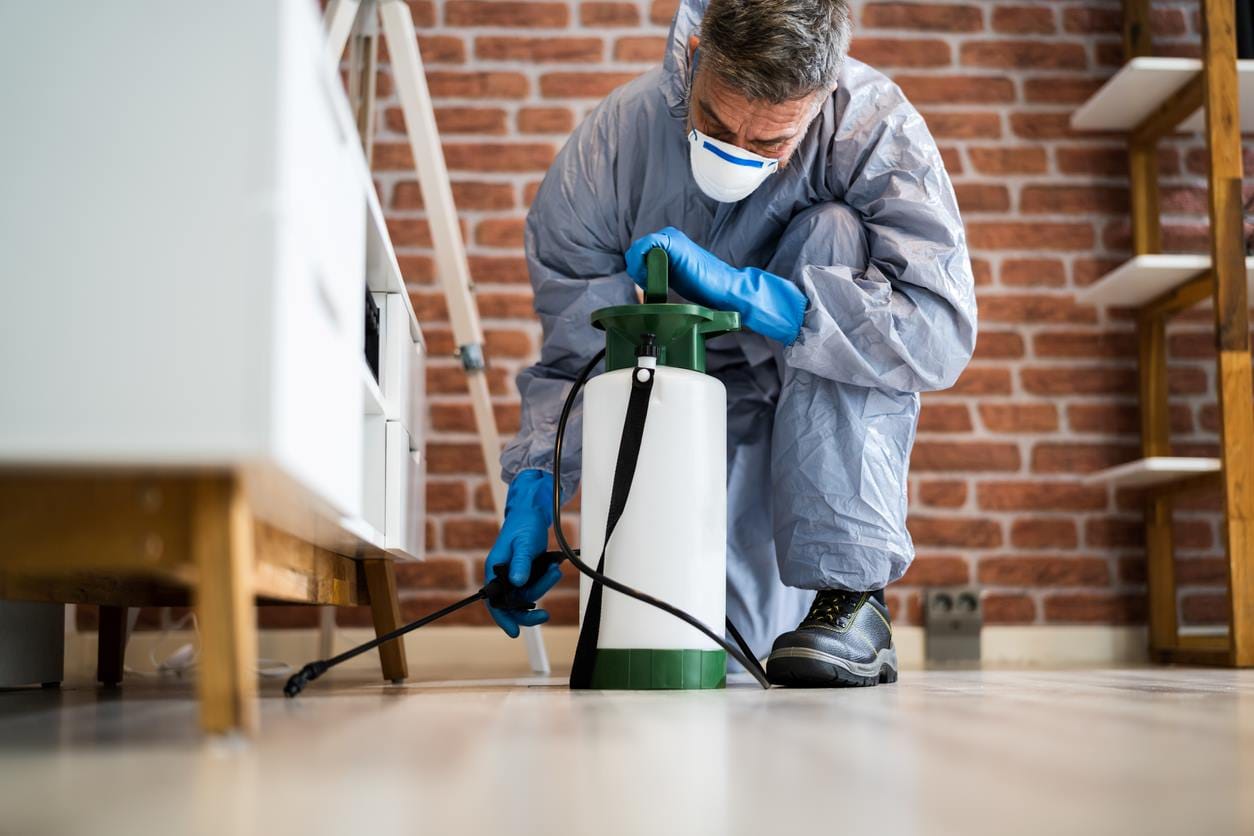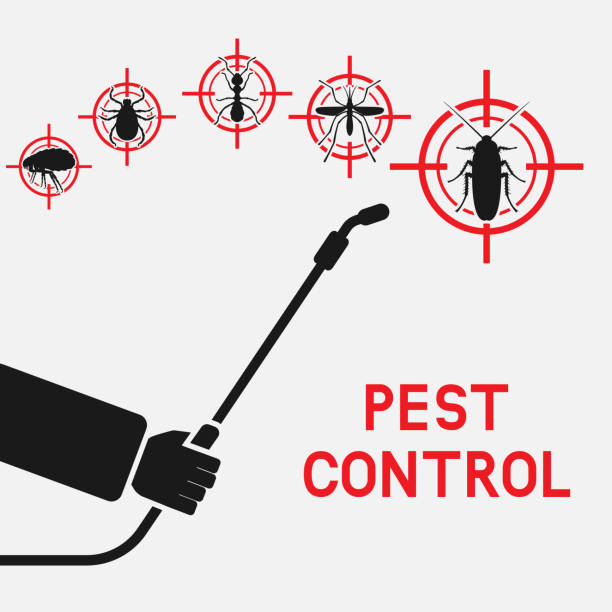Checking Out Invasion and Treatment Techniques on the planet of Bug Control
The landscape of pest control encompasses a myriad of difficulties, especially as infestations of usual home parasites continue to develop. By integrating preventative steps with innovative monitoring techniques, such as Integrated Pest Management (IPM), property owners can better protect their environments.

Common Household Vermin
When it comes to managing our living areas, comprehending typical family parasites is vital. These insects not just disrupt our convenience but can additionally position health dangers and damage property. The most prevalent family bugs consist of ants, cockroaches, rats, termites, and bed bugs.
Ants, usually seen foraging in kitchen areas, can pollute food and develop huge nests. Cockroaches, understood for their durability, can set off allergic reactions and spread microorganisms. Rodents, consisting of computer mice and rats, can cause architectural damages and bring conditions like hantavirus and salmonella. Termites, typically referred to as "silent destroyers," can endanger the stability of wooden structures, causing costly repair work. Bed pests, although not illness providers, can trigger considerable pain with their attacks and bring about mental distress.
Identifying the indications of these pests, such as droppings, nests, or bite marks, is vital for very early intervention (Pest Control Lockhart). Proper cleanliness practices, securing entrance points, and keeping a clutter-free setting are efficient preventative measures. By recognizing these usual home insects and understanding their behaviors, home owners can take aggressive steps to mitigate invasions, making sure a much healthier living setting
Comprehending Pest Infestations
Bug problems can intensify rapidly, transforming a small inconvenience right into a significant trouble if not attended to without delay. Typical elements adding to problems consist of poor cleanliness, structural vulnerabilities, and seasonal modifications that drive parasites inside.
Determining the type of parasite is crucial, as different types display different habits and reproductive prices. For circumstances, rats may establish nests in covert locations while bugs like cockroaches flourish in moist environments. Early discovery often rests on recognizing signs such as droppings, nibble marks, or uncommon noises, which can show a trouble prior to it becomes severe.
Environmental problems also play an essential duty in insect proliferation. Warm, moist environments can help with the quick development of parasite populations, while changes in landscape design or building can inadvertently develop helpful settings. Routine inspections and preventative procedures are vital to mitigating the danger of infestations. An educated strategy to comprehending these characteristics lays the foundation for efficient insect monitoring methods in the future.
Treatment Techniques and Strategies
Efficient treatment approaches and strategies are necessary for alleviating bug problems and restoring a risk-free atmosphere. A diverse strategy is frequently best, integrating chemical, organic, and mechanical approaches tailored to the details parasite and the intensity of the invasion.
Chemical treatments consist of the usage of insecticides and herbicides, which can successfully get rid of insects. Proper application and adherence to safety standards are vital to lessen dangers to people and non-target microorganisms. Integrated Parasite Management (IPM) urges the wise usage of chemicals as a last hope, counting instead on tracking and threshold levels to establish treatment needs.
Biological control approaches involve presenting natural killers or parasites to reduce pest populaces. This technique is significantly prominent, specifically in farming setups, as it advertises ecological sustainability.
Mechanical approaches, such as catches and barriers, supply immediate relief from insects without introducing chemicals. Alternatives consist of sticky traps for bugs or physical barriers for rodents.
Inevitably, the choice of treatment approach ought to consider the specific pest, the setting, and potential effect on human health and wellness and environments. A balanced mix of these techniques can efficiently take care of problems while advertising long-term parasite control services.
Preventive Procedures for House
Proactively attending to parasite problems prior to they intensify is essential for preserving a healthy and balanced home atmosphere (Pest Control Lockhart). Applying reliable precautionary steps can dramatically decrease the probability of problems, eventually guarding both your home and well-being

Proper official statement landscaping also plays an essential role in avoidance. Keeping bushes and trees cut away from your home decreases the chances of parasites discovering their means inside. Additionally, make sure that drainage systems are operating effectively to stop standing water, which can pull in insects and other pests.
Last but not least, regular assessments are recommended. Regularly looking for indicators of pest activity permits very early treatment. By taking on these safety nets, house owners can develop a setting that is much less congenial to parasites, therefore boosting their general quality of life and decreasing the requirement for comprehensive pest control treatments.
Industrial Parasite Control Methods
An extensive strategy to industrial parasite control is necessary for businesses intending to maintain a risk-free and sanitary atmosphere. Reliable techniques entail a combination of routine inspections, worker training, and the execution of Integrated Insect Management (IPM) methods.
Normal inspections allow very early detection of bug task, allowing for timely treatment. Businesses must create a routine schedule for these evaluations, concentrating on high-risk areas such as kitchen areas, storeroom, and waste disposal sites. Staff member training recommended you read is just as essential; personnel needs to be educated on the signs of bug problems and the reference relevance of reporting them instantly.
Carrying out IPM practices helps reduce bug concerns sustainably. This consists of environment modification, such as sealing entry points and minimizing clutter, along with using natural deterrents prior to resorting to chemical therapies.

Furthermore, collaborating with an accredited parasite control provider ensures accessibility to expert knowledge and sophisticated therapy options. This partnership can lead to customized pest control plans tailored to the specific demands of the service, decreasing threats and improving general efficacy. Ultimately, an aggressive and enlightened technique promotes a pest-free environment, safeguarding both public wellness and organization track record.
Final Thought
To conclude, effective parasite control requires an extensive understanding of common house bugs and their habits, coupled with targeted therapy techniques. Executing safety nets together with treatment approaches such as Integrated Insect Management and organic control enhances the capacity to reduce infestations. Routine evaluations and a mix of chemical and mechanical services further add to maintaining pest-free atmospheres. Ultimately, an all-around technique to pest management is crucial for securing living rooms from unwanted burglars.